Vascular and circulatory disorders
Vascular and circulatory disorders include
- Vascular disorders
- Arterial disorders
- Aortic disorders
- The category you were looking for was not found. Please try another one.
- List is empty.

Aneurysm
An aneurysm, also known as vascular edema, is a serious vascular disease. It affects the arteries and aortas. It is divided into right, dissecting, and false. A person can live with an unrecognized aneurysm for many years, however, its rupture immediately threatens a person's life.

Coarctation of the aorta
Coarctation of the aorta is a congenital heart defect characterized by narrowing of a major heart vessel. It accounts for nearly one-tenth of congenital heart defects. How does this developmental cardiovascular disease arise?

Aortic diseases
Aortic disorders are not common but are all the more serious. They can take place very quickly and acutely with life-threatening but also chronically.

Aortic dissection
During aortic dissection, the vascular wall ruptures, with blood flowing between its inner layers. The extent may be small, but also extensive and affecting the entire aorta.

Atherosclerosis
Atherosclerosis is a disease of the arteries. The wall of the artery is affected by a disease process. It takes place over a long period of time and is progressive due to negative conditions.

Carotid artery stenosis
Narrowing of the carotid artery is a serious condition that can lead to impaired blood supply to the brain and even stroke. Atherosclerosis is not the only cause.

Chronic venous
Chronic venous disease is a common problem, the development of which is also supported by a modern lifestyle. It negatively affects the quality of life, it worsens over time.

Deep vein thrombosis
Deep vein thrombosis is a relatively common disease, the difficulties of which can be mild and insignificant. However, the other side of the problem is the risk of developing pulmonary embolism and thromboembolic disease.

hemorrhoids
Hemorrhoids or as know also as piles, are a frequent problem of adults with a significant impact on comfort and often even ones' psyche.

Myocardial infarction
Myocardial infarction or even heart muscle infarction is an acute form of ischemic heart disease. Ischemia, or bloodlessness, is caused by a blockage in the coronary artery that leads blood to the heart muscle cells. The main cause is a sudden closure or long-term narrowing of the blood vessel.

Peripheral Artery Disease
Peripheral artery disease is a term for diseases of the arteries that supply various parts of the body. Blood vessels are usually damaged due to atherosclerosis, but it is not the only cause.

Post-thrombotic syndrome
Post-thrombotic syndrome arises as a complication of venous thrombosis. This is a condition that can significantly affect the quality of life of the affected person.
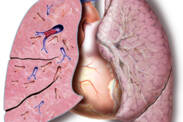
Pulmonary embolism
Pulmonary embolism (PE) is an acute condition in which blood vessels in the lungs become clogged. The most common cause is thromboembolic disease. A blood clot is released and travels through the vessels as an embolus. It clogs vessels. The massive form of PE is life-threatening.
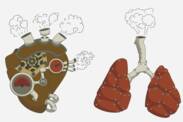
Pulmonary hypertension
Pulmonary hypertension is a disease that limits the person's overall performance, quality of life and life expectancy. The cause may not always be clear or there might be another disease behind it.

Raynaud Syndrome
Raynaud syndrome is manifested by episodes of reduced blood flow to end arterioles, most commonly the fingers and toes. The condition may indicate a more serious health problem, but not necessarily.

Thromboembolic disease
Thromboembolic disease poses a risk of developing serious complications that threaten a person's life.
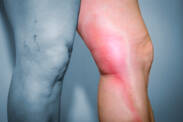
Thrombophlebitis of superficial veins
Superficial thrombophlebitis is an inflammatory disease of the superficial veins. It mainly involves the veins of the lower extremities.
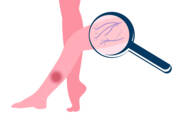
Tiber ulcer
Many of us are familiar with a tibial ulcer, at least from hearsay. Let's take a closer look at the causes, symptoms and treatment.
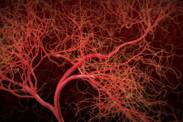
Vasculitis
The term vasculitis denotes a broad group of diseases characterized by inflammation to necrosis of the vascular wall. They affect all types of blood vessels and anywhere in the body.

Varicose veins
Varicose veins are the most common disease in developed countries. They are classified as diseases of civilization. They are estimated to affect 10-40% of the world's population. Their incidence also depends on age, with women more frequent.









